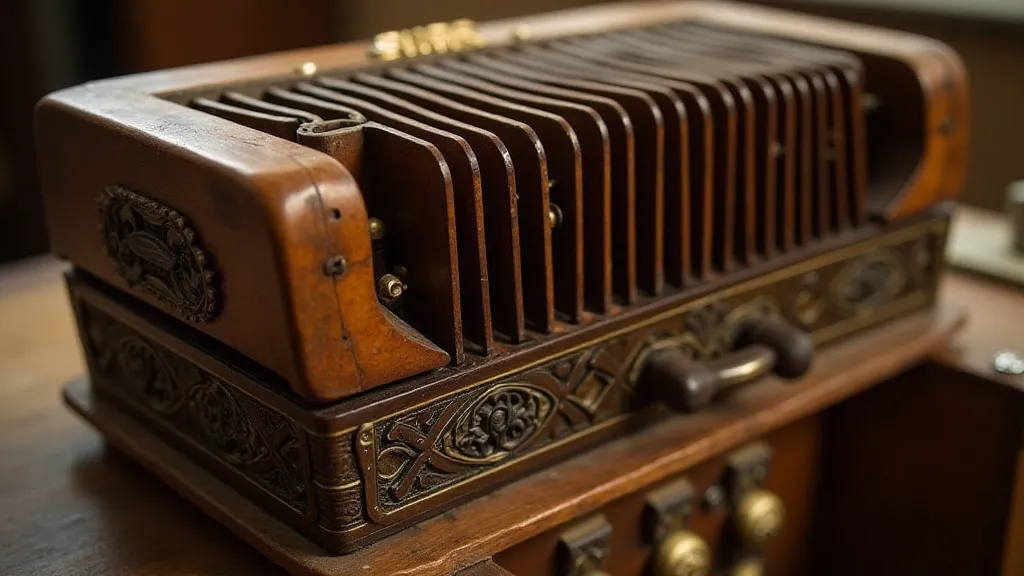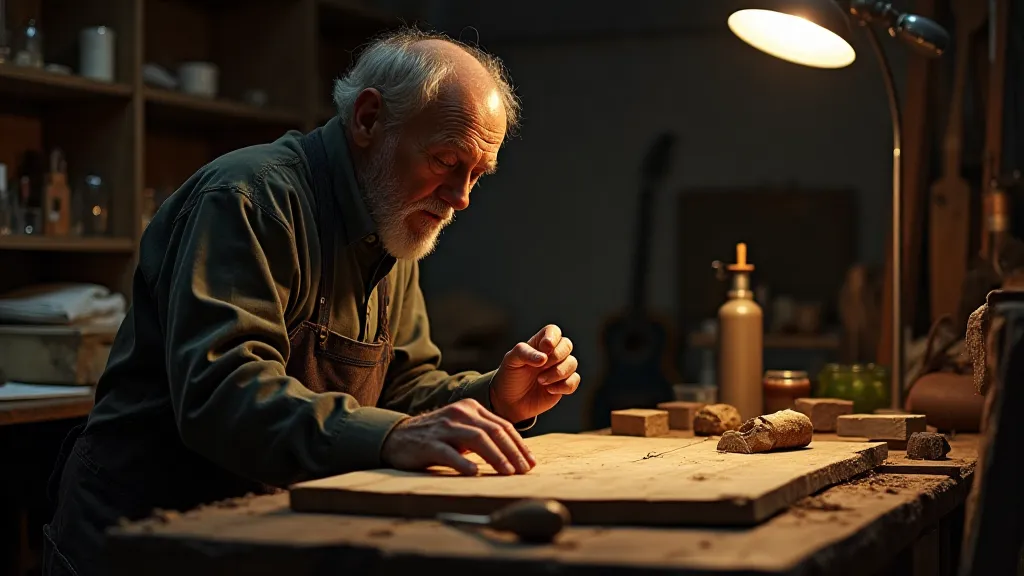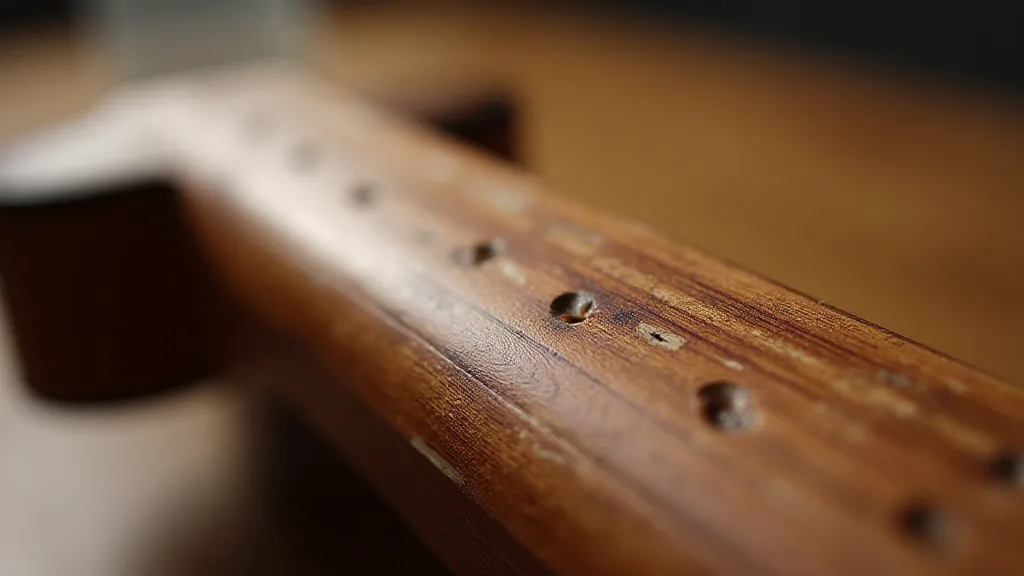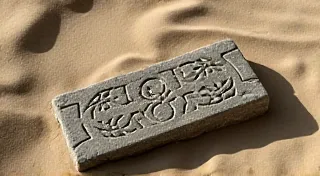The Silent Symphony of Lost Materials: The Ecological Cost of Instrument Making
The scent of old wood, the gleam of aged brass, the whisper of reeds – these are the sensory hallmarks of a traditional instrument. We cherish them, these vessels of music history, connecting us to generations past. But behind the captivating melodies and intricate craftsmanship lies a silent, increasingly urgent question: at what ecological cost are we preserving these musical treasures? The romantic image of a luthier meticulously shaping wood, a bellows maker painstakingly crafting leather, often overlooks the profound impact these practices have on the ecosystems that provide those vital materials.
My grandfather, a retired shipwright, possessed an antique accordion, a Hohner Monarch from the 1930s. He's gone now, but I can still recall the reverence in his voice when he spoke of it. He wouldn't let anyone touch it carelessly, explaining that each piece, from the rosewood keys to the bellows lined with kid leather, represented a connection to the forests and animals that once thrived. He taught me to appreciate not just the music it produced, but the story held within its materials - a story that is, increasingly, a cautionary tale.
The reliance on specific, often rare, materials is deeply woven into the history of folk music. Think of the spruce forests of the Alps, crucial for violin making. The resonant qualities of Bosnian spruce, for example, have been prized for centuries, contributing significantly to the exceptional sound of instruments crafted in the Balkans. Similarly, the rosewood used for guitar fingerboards, the ebony for keys, and the ivory (historically, though thankfully increasingly replaced) for decorative elements all stemmed from specific, geographically limited ecosystems. These weren’t just resources; they were integral parts of the landscapes that shaped the cultures who developed these instruments. The very evolution of these traditions tells a story of adaptation and reliance – sometimes precarious – on local materials. Sometimes, the availability of those materials dictated the types of instruments that could flourish in a given region, leading to unique sonic and cultural identities.

The Material Origins: A Disappearing Landscape
The issue isn's merely about using wood. It’s about the selective harvesting that often accompanied it. The demand for certain types of spruce, for instance, has led to over-exploitation in some regions, impacting biodiversity and contributing to habitat loss. Rosewood, used extensively in guitars and other stringed instruments, faces similar pressures. The illegal logging of rosewood is a major problem in many parts of the world, driven by the lucrative instrument market. It’s a stark reminder of how seemingly small desires—the desire for a beautiful guitar, a resonant violin—can have cascading effects on fragile ecosystems across the globe. The history of these instruments is also intricately linked to colonial trade routes, often tracing the movement of both materials and musical styles across continents. Examining how these instruments spread reveals a complex tapestry of cultural exchange and, unfortunately, sometimes exploitation, a theme explored further in “Echoes of Empire: The Lingering Influence of Colonial Trade on Musical Instrument Distribution”.
The story extends beyond timber. Bellows, a critical component of accordions and other wind instruments, traditionally utilized animal hides – often goat or pigskin. The ethical considerations surrounding this practice, coupled with concerns about durability and the potential for disease transmission, are prompting a shift toward alternative, often plant-based, materials. Reed cane, vital for the reeds that vibrate to create sound, faces challenges from disease and climate change, threatening the livelihoods of cane farmers and the continuity of musical traditions. The skill required to craft a functional and responsive bellows is often passed down through generations, a vital link in the chain of musical heritage.
Craftsmanship and Conservation: A Delicate Balance
The traditional craft of instrument making is a dying art. The younger generations aren't always eager to follow in the footsteps of their predecessors, deterred by the arduous training and the often-unstable income. This loss of skilled artisans is a tragedy in itself, but it also hinders efforts to find sustainable alternatives to traditional materials. Experienced luthiers possess a deep understanding of wood properties and construction techniques; their expertise is invaluable in experimenting with lesser-known species and developing innovative, eco-friendly methods. Their knowledge isn’t just technical; it’s deeply rooted in centuries of observation and adaptation, reflecting a profound understanding of the materials and the instruments themselves. These artisans are keepers of a rich cultural heritage, and the loss of their skills would be a devastating blow to the world of music. Often, the stories and techniques passed down are not easily captured in written form, existing primarily within the memory of the craftspeople and the instruments they create. The passing of these traditions highlights the importance of preserving not just the instruments themselves, but the knowledge and skills required to create them.
Restoration, rather than replacement, is a critical component of sustainable instrument preservation. A well-executed restoration can extend the lifespan of an instrument by decades, reducing the demand for new materials. However, even restoration requires careful consideration. Using historically accurate materials, even if less sustainable, can be a point of debate. A responsible restorer must weigh the cultural significance of authenticity against the ecological impact of sourcing those materials. The nuance involved in restoration extends beyond simply replacing worn parts; it requires a deep understanding of the instrument’s history, construction techniques, and the intended sonic qualities. Sometimes, the "correct" material isn't simply the original; it's a careful balancing act between historical accuracy and environmental responsibility.
Consider the challenges of sourcing replacement bellows leather. The historical use of ‘kid’ leather (from young goats) is ethically problematic and increasingly difficult to obtain legally. Modern alternatives, such as synthetic materials or treated fabrics, can sometimes compromise the instrument’s sound and feel, but they represent a necessary step towards a more responsible approach. The sonic impact of these alternatives can be considerable, and luthiers often spend considerable time experimenting to find materials that both meet ethical standards and deliver acceptable performance. The pursuit of these alternatives underscores the broader effort to find sustainable solutions across the entire instrument-making process. The connection between these traditional instruments and the cultures that developed them is profound, a sentiment explored in “The Echoing Chamber of Memory: Instruments as Relics of Ancestral Knowledge”.

The Future of Folk Music: A Responsible Resonance
The future of folk music isn't solely about preserving the music itself; it’s about preserving the entire ecosystem that made that music possible. This requires a multifaceted approach involving musicians, luthiers, conservationists, and consumers. It’s a challenge that demands creativity, collaboration, and a willingness to question long-held assumptions. The very techniques used to produce the sounds of these instruments, the subtle movements and pressures applied by the musician, contribute to the unique character of each performance. This intricate interplay between instrument, musician, and cultural context is a powerful testament to the enduring legacy of folk music.
Musicians can support luthiers who prioritize sustainable practices, actively seeking out instruments crafted from responsibly sourced materials. Consumers can make informed purchasing decisions, opting for instruments made from alternative woods or supporting restoration projects. Luthiers can embrace innovation, experimenting with sustainable materials and developing new construction techniques. The skill of the musician is inseparable from the instrument they play, and the ongoing evolution of both is crucial for the continued vitality of folk music.
The rise of online communities and marketplaces dedicated to vintage and antique instruments has created opportunities for increased transparency and accountability. Information about the provenance of materials and the construction methods used can be shared more readily, allowing consumers to make more conscious choices. Furthermore, the increased availability of information fosters a culture of appreciation for the intricate details and the often-challenging processes involved in creating these instruments. This growing awareness is helping to shift the focus from simply acquiring an instrument to understanding its history, its construction, and its environmental impact.
The story of my grandfather's accordion serves as a poignant reminder of the connection between music, nature, and human ingenuity. We have a responsibility to ensure that this connection isn't severed. By embracing sustainable practices and fostering a culture of appreciation for the materials that bring music to life, we can ensure that the silent symphony of lost materials doesn’t fade into an irreversible silence. The music deserves to resonate – not just in our ears, but in a world where its origins are protected for generations to come. The delicate art of playing these instruments and the techniques used to manipulate their sounds often mirror the surrounding environment, reflecting the ingenuity and adaptability of the cultures that created them.

Ultimately, the future of these instruments – and the music they produce – hinges on our ability to understand the complex web of connections that sustain them. It’s a story of tradition, innovation, and a growing awareness of our responsibility to protect the natural world for generations to come.





